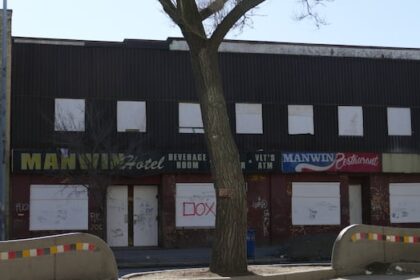New BrunswickThe New Brunswick living wage increased by 15 cents an hour this year, accord to a report released Wednesday by the Human Development Council. Social research group says 45 per cent of N.B. workers earn less than living wageHannah Rudderham · CBC News · Posted: Nov 12, 2025 2:39 PM EST | Last Updated: 3 hours agoListen to this articleEstimated 4 minutesThe audio version of this article is generated by text-to-speech, a technology based on artificial intelligence.The living wage is calculated using a Canadian framework that centres on the basic needs of a family of four — two working parents and two children — and takes 10 different expense categories into consideration. (Hannah Rudderham/CBC)The New Brunswick living wage increased by 15 cents an hour this year, according to the Human Development Council, a Saint John-based group that identifies and researches social issues in the province.The council has calculated the living wage, the hourly pay that would be required in order to meet basic needs and maintain a reasonable quality of life, at $24.77.The New Brunswick minimum wage, which differs from a living wage because it is legislated, is $15.65 an hour.Although the gap between the two is already significant, a data analyst and research co-ordinator with the council said the $24.77 number still only accounts for basic needs and a few extra things.“For example, there’s no retirement savings in the calculation,” Liam Fisher said. “There’s also no cost included for, let’s say, big emergency medical expenses or costs related to disability. There’s also no amount that’s set aside for any savings related to post-secondary education.“So even though there is a small amount for social inclusion within the budget, there’s still a number of expenses that a family would like to have, but aren’t met by the $24.77.”CBC News asked for an interview with Social Development Minister Cindy Miles but did not get one.Liam Fisher, a data analyst and research co-ordinator with the Human Development Council, said the $24.77 living wage number is an advocacy tool that can be used by individuals or labour unions seeking better wages. (Submitted by Liam Fisher)Heather Atcheson, a social researcher with the Human Development Council, said the living wage is calculated using a methodology called the “Canadian living wage framework.”It uses a reference family of four people — two working parents and two children — and takes 10 different expense categories into consideration. These categories include things, such as child care, food, health care, household expenses, shelter and transportation. It also includes a modest allowance of two weeks pay per parent per year for a contingency or emergency fund as well as a component for social inclusion that includes expenses such as school supplies, recreational activities and gifts for holidays and birthdays. The framework assumes both parents are working 35 hours per week, and the calculated living wage is what each would need to earn hourly to afford all of their expenses. Atcheson said the gap between the calculated living wage and New Brunswick’s minimum wage is “quite significant.”“It’s about a $9 difference, and that just reinforces what we already know, which is that people who are earning minimum wage or other low incomes are faced with some pretty significant affordability challenges today,” she said.Heather Atcheson, a researcher with the Human Development Council, said the living wage is based on a Canada-wide framework that accounts for two working parents and two children. (Submitted by Heather Atcheson)The most expensive budget items in the report are shelter, at around $1,843 per month, and food at around $1,443 per month.The expenses differ depending on the city, as does the living wage. For Fredericton, the report lists a higher living wage of $26.05 with shelter budgeted at about $2,087 per month.Moncton’s living wage is listed at $24.43, with $1,921.74 for shelter. And Saint John’s living wage is similar at $24.49, with $1,892.69 budgeted for monthly shelter costs. The council also examined some data from the 2024 labour force survey, finding that that nearly half of workers in New Brunswick are earning less than the living wage. Atcheson said. That data also indicated that 89 per cent of low-wage employees are not students, that 75 per cent are full-time employees and 82 per cent are permanent. Fisher said the $24.77 living wage number should be used as an advocacy tool, whether by individuals or labour unions seeking better wages. “That $24.77 is important because it emphasizes the gap between what many are earning and what they would ideally be earning,” he said.In some parts of the country, Atcheson said, employers are able to be certified if they commit to paying a living wage. But in the Atlantic provinces, such employer certifications don’t exist yet, she said.“But what we hear in our work is that there are people who look for our living wage reports every year, and they actually make the decision to pay a living wage, even though they’re not officially recognized,” said Atcheson. “That’s really encouraging to us.”ABOUT THE AUTHORHannah Rudderham is a reporter with CBC New Brunswick. She grew up in Cape Breton, N.S., and moved to Fredericton in 2018. You can send story tips to hannah.rudderham@cbc.ca.With files from Information Morning Moncton
Living wage in N.B. now nearly $25 about $9 more than actual minimum wage












